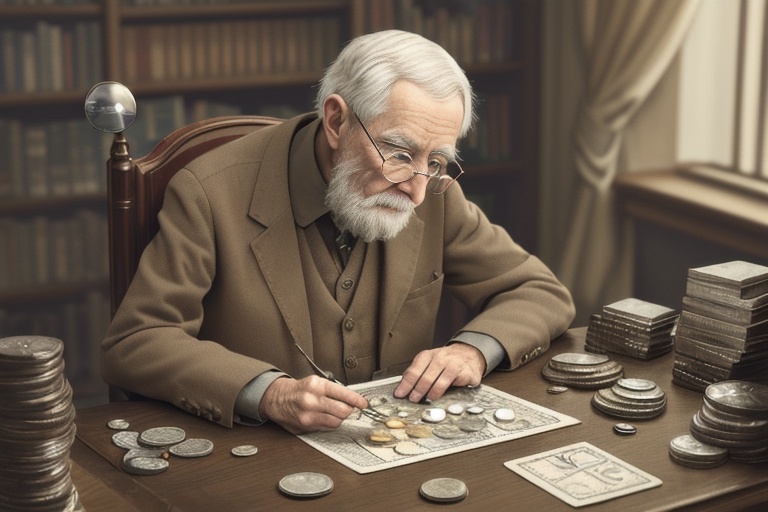The field of numismatics, which involves the study and collecting of coins, tokens, paper currency, and related objects, is a pursuit with deep historical roots and a wide reach. Numismatists are individuals deeply invested in understanding the significance and history of monetary forms and come from varied backgrounds as scholars, collectors, and dealers. Each brings a different perspective to the valuation and appreciation of these items. We embark on exploring this intriguing world – its history, its practitioners, and the significant roles numismatics plays in our understanding of socio-economic history through the currencies of the past.
The field of numismatics, which involves the study and collecting of coins, tokens, paper currency, and related objects, is a pursuit with deep historical roots and a wide reach. Numismatists are individuals deeply invested in understanding the significance and history of monetary forms and come from varied backgrounds as scholars, collectors, and dealers. Each brings a different perspective to the valuation and appreciation of these items. We embark on exploring this intriguing world – its history, its practitioners, and the significant roles numismatics plays in our understanding of socio-economic history through the currencies of the past.
The Origin and Evolution of Numismatics
The etymology of 'numismatics' traces back to the Late Latin term 'numismatis,' and the fascination with currency predates its first recorded use in the English language in 1799. Ancient civilizations have been using coins for millennia, and throughout history, these items have captivated the interest of people across nations and cultures. This interest isn't confined to just coinage; it also encompasses notaphily, the collection and study of paper money and banknotes, extending the realm of numismatics beyond metal currency.
The Diversity of Numismatists
What makes one a numismatist? It’s not a singular definition but a range of activities and levels of engagement. Amateurs often embark on coin collecting out of pure personal interest. These enthusiasts may not possess formal training but offer substantial contributions to numismatics through their dedication and discoveries. Examples include well-known names such as Walter Breen and King Farouk I of Egypt, both notable for their extensive collections.
Professional numismatists, commonly known as coin dealers, are pivotal to the trade, facilitating the buying, selling, and appraisal of coins. Their knowledge is essential to the evaluation of historical coins and artifacts, aiding museums, historians, and archaeologists. Organizations such as the International Association of Professional Numismatists (IAPN) and the British Numismatic Trade Association (BNTA) are home to many of these experts.
Scholarly numismatists, typically affiliated with academic institutions or museums, delve deeply into coinage's socio-economic contexts. They explore how currency reflects the economic conditions, political climates, and cultural practices of its time. Formal education for numismatics is limited and is often pursued at the postgraduate level or through specialized programs and societies. The Royal Numismatic Society, for instance, honors scholarly achievement in this field with medals and distinctions.
Education and Organizational Support in Numismatics
While institutions offering numismatics as part of their curriculum are few, those interested in this field can find educational opportunities within other disciplines, such as Classical Studies, Ancient History, and Archaeology. Summer schools and seminars sometimes provide supplemental training, allowing enthusiasts to immerse themselves in hands-on study.
Recognitions such as Donald H. Kagin's distinction of earning the first Ph.D. in Numismatics in the United States highlight the academic achievements possible within this specialization. Numismatic societies around the world, such as the American Numismatic Association and the British Numismatic Society, offer a community, resources, and support for individuals at any stage of their numismatic journey.
Contemporary Numismatists and Their Contributions
The numismatic landscape today is rich and diverse, with scholars researching coins from various geographic and temporal contexts. Noteworthy contemporaries, such as Michael Grant and Philip Grierson, have expanded our understanding of numismatics through their scholarly work, elucidating the tales told by ancient and modern currencies alike.
The Impact and Legacy of Numismatics
The role of numismatists, whether hobbyists or career professionals, is significant in capturing and analyzing historical moments. They facilitate not merely the preservation of currency but also provide insights into our collective past, contributing to a deeper comprehension of our origins and evolutions across different civilizations.
Numismatics bridges the gap between past and present, allowing us to decipher socio-economic trends and historical narratives encrypted in coins and currency. From the passionate collector to the dedicated scholar and the expert coin dealer, each numismatist enriches our understanding of the artifacts that have served as the lifeblood of markets and economies for centuries.
As we honor the contributions of Walter Breen, King Farouk I, Harry Bass, Donald H. Kagin, and other luminaries in the field, we recognize the integral role of numismatics in intertwining historical disciplines. The expertise provided by professional numismatists is invaluable to historians, while academicians dissect currency systems to interpret our experiences through the ages.
The numismatist's contribution is indeed a vivid tapestry that melds commerce, history, and art, compelling us to appreciate these remnants of the past as tokens of human ingenuity and social development. In the evolving landscape of numismatics, it is through their dedication and painstaking study that we gain a profound appreciation for what might otherwise be overlooked as mere vestiges of transactions. But these pieces are far more; they are emblems of our socio-economic heritage.
Information for this article was gathered from the following source.

